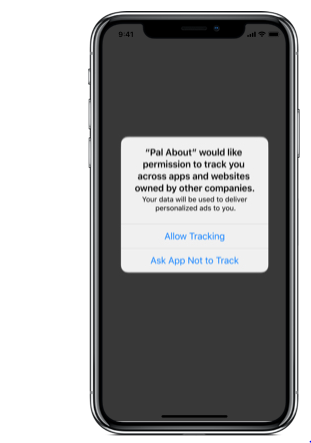It was both the proverbial thorn in the flesh to privacy advocates and the boon to the growth of the mobile marketing industry. In 2012, Apple added a new feature, the Identifier for Advertisers (IDFA), with the release of its new mobile operating system, iOS 6. The IDFA was a unique, random number assigned to each user’s device that enabled advertisers and data companies to track how users interacted with a mobile ad. In the world of mobile advertising where users spent more time on apps versus the web, the IDFA played the role that cookies had played for the internet. It was the IDFA that enabled targeted advertising to users on the phone. It was the IDFA that was the life blood of countless apps that relied on ads as the main source of revenue. In this way, the IDFA was the stuff on which the $44B mobile ad industry was built.
With the release of its iOS 14 in September, however, Apple will effectively kill the IDFA in its latest move to protect user privacy, sending the mobile industry into an existential crisis. To be precise, the IDFA will not be completely gone, but rather, live on in a weakened, anemic form that will have little value to the mobile world. This is because whereas before users were automatically opted in to share their IDFAs and related information, the new model requires app makers to obtain users’ express consent before using their IDFAs. To illustrate, this is how the new IDFA change will go in practice: upon downloading a new app, the user will see a glaring pop-up notification asking whether he would like to share his personal information (remember that this pop-up had not appeared previously). The choice about whether to share one’s personal information is the user’s to make, but, the fact of a pop-up, laced with language warning about his personal information going off to the ethers of the internet, is enough to drive most users to refuse consent.

The new iOS pop-up upon new app installs.
Industry experts expect only 10–20% of users to opt into sharing their IDFAs. The implications here are far-reaching. The new IDFA changes mean that app makers and mobile advertisers will lose valuable information on an estimated 80–90% of iOS users, such as how they respond to ads, other apps they may use, whether a particular ad view led to the conversion of a new user. Targeted advertising — the art of serving relevant ads to the right users and of which is the linchpin to effective marketing campaigns — will be rendered null and void. Digital marketers, who rely on targeted advertising for effective ad campaigns, will have to rethink new strategies for delivering advertising to desired customers across mobile apps.
In this way, the mobile industry is facing an existential nadir this September. In fact, just as you read this, a great many startups and large companies alike are in panic mode. Let me paint you a picture of the panic that I’ve witnessed at some startups. Management teams, bracing for the impact of the IDFA changes, are preparing for steep declines in mobile ad revenues. After all, the logic goes, advertisers are demanding folks, and if you don’t provide them with clear data about the effectiveness of their ads, then they’re going to put their marketing dollars elsewhere. Engineering teams are also scrambling, working late nights, rebuilding their tech stacks to find new ways to glean user information in a world where IDFA no longer exists. They do have some technical workarounds at their disposal. Some are resorting to technical alternatives like fingerprinting or Apple’s feeble IDFA replacement in the form of SKAdNetworks, but none of these new hacks provide the level of user information that they had in the old IDFA world.
#idfa #ios #apple #startup #mobile
